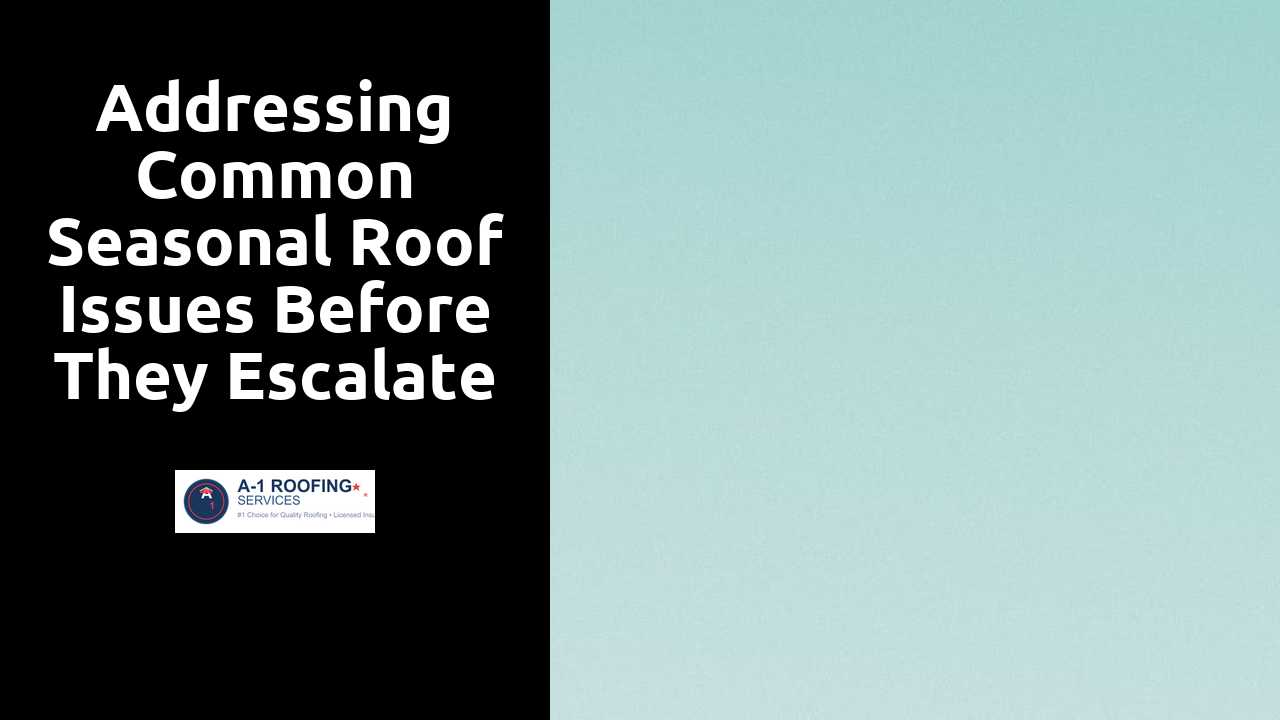
Addressing Common Seasonal Roof Issues Before They Escalate
Table Of Contents
Recognizing Signs of Roof Wear and Tear
Homeowners should actively look for indicators of damage on their roofs. One of the most telling signs is the presence of curling or buckling shingles. These issues can arise due to age or exposure to severe weather conditions. The edges of the shingles may lift, allowing moisture to seep beneath them. Additionally, granule loss is another symptom. When you notice an accumulation of granules in your gutters or around your property, it could signal that your roofing materials are deteriorating.
Another crucial sign of wear is the appearance of dark streaks running down your roof. These streaks often indicate the presence of algae, which, while not damaging in itself, can point to moisture retention issues. Homeowners should also check for signs of sagging, as this can indicate structural problems. If water stains are visible on your ceilings or walls, this suggests potential leaks that require immediate attention. Recognizing these early signs can prevent more significant issues from developing in the future.
Get more info by visiting this post.
Spotting Leaks and Missing Shingles
Identifying leaks and missing shingles is crucial for maintaining the integrity of your roof. Regularly check for water stains on ceilings or walls as these can indicate underlying problems. Inspect the roof surface for any lifted or completely missing shingles. Pay close attention to areas where shingles overlap, as these spots can be more prone to water intrusion.
If you spot any signs of wear or damage, it’s essential to address them promptly. Even small leaks can escalate into significant issues, leading to structural damage or mold growth inside your home. Being vigilant about these common signs can save you time and money in the long run. Regular monitoring will ensure a proactive approach to roof maintenance.
Importance of Regular Roof Inspections
Regular inspections of roofs play a vital role in maintaining the integrity of a home. They allow homeowners to detect potential problems early, reducing the risk of costly repairs down the line. By identifying issues like water damage, mold, or structural weaknesses, homeowners can take proactive steps to address them. This not only helps to extend the lifespan of the roof but also ensures the safety and comfort of those living in the home.
Establishing a routine inspection schedule is essential for effective roof maintenance. Conditions such as storms, heavy winds, and snowfall can significantly impact the roof's condition. After severe weather events, it is especially important to inspect the roof for any signs of damage. Regular check-ups can help catch small issues before they escalate into major concerns, ultimately saving time and money.
Establishing a Inspection Schedule
Creating an inspection schedule for your roof is vital to catch potential issues early. Homeowners should aim for at least two inspections each year, ideally in the spring and fall. This timing ensures that any damage from harsh winter weather is identified before the new season begins. Inspecting after significant storms is also advisable, as these events can lead to unforeseen wear.
In addition to seasonal checks, consider adding a thorough inspection after any severe weather. Look for signs of damage such as loose or missing shingles, cracked flashing, and debris build-up. Documenting the condition of your roof over time can help track its health and prompt necessary maintenance. Integrating these inspections into your home care routine will contribute to a longer lifespan for your roof.
DIY Maintenance Tips for Homeowners
Homeowners can take several proactive steps to maintain their roofs and extend their lifespan. Regularly clearing gutters and downspouts of debris prevents water backup, which can lead to leaks and other damage. Inspecting flashing around chimneys and vents can help identify potential problems early, preventing costly repairs later. For those comfortable with DIY projects, ensuring that roof shingles are intact and secured can mitigate the risk of wind damage during storms.
Before climbing onto the roof, it is essential to prioritize safety. Using a sturdy ladder and wearing a harness while working can significantly reduce the risk of falls. Encourage the use of safety gear like non-slip shoes and protective eyewear. Homeowners should also keep an eye out for moss or algae growth, as these can trap moisture and lead to further deterioration. Taking these preventative measures can make a significant difference in the overall condition of a roof.
Safely Accessing and Inspecting Your Roof
Before embarking on any roof inspection, safety should be the top priority. Start by wearing appropriate footwear with good grip to prevent slips. If using a ladder, ensure it’s stable and positioned on a flat surface. Have someone assist you on the ground to maintain safety and offer immediate support if needed. Look for areas of concern from the ground, such as sagging sections or unusual debris accumulation, before climbing up.
Once access is secured, keep a careful eye on your movements to avoid any fall hazards. Move slowly and deliberately, inspecting each section of the roof for signs of damage. Look for missing or curled shingles, as well as discoloration that might indicate potential leaks. Make use of a binocular to examine hard-to-reach areas from a distance if climbing isn't advised. Prioritize documenting any findings, as this will assist in tracking issues over time or communicating with contractors if repairs are necessary.
Related Links
The Importance of Cleaning Gutters as Seasons ChangeBest Practices for Inspecting Roof Seals During Seasonal Changes